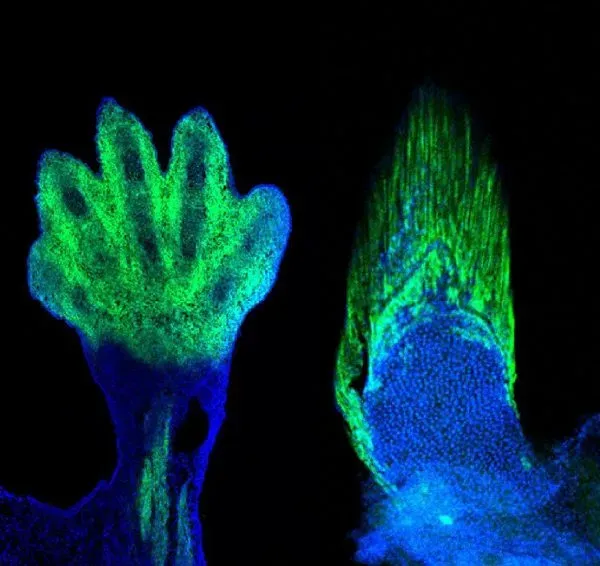UChicago, MBL Study Illuminates How Fins Evolved into Fingers and Toes

How swimming fish evolved into land-traveling, four-limbed vertebrates is a longstanding mystery.
Twelve years ago, Neil Shubin of the University of Chicago unearthed a 370-million-year-old fossil fish with limb-like fins that was hailed as a “missing link” from sea to land animals.
But how, exactly, can a fin turn into a limb?
This week in Nature, Shubin and colleagues report on work initiated at the Marine Biological Laboratory (MBL) that provides major insight into the game-changing fin-to-limb transition. Led by Tetsuya Nakamura, the team showed that a set of genes, called Hox, plays a surprisingly similar role in patterning the rays of fins and the digits of tetrapod limbs. The New York Times calls it the discovery of “a deep evolutionary connection” between fins and hands and feet.

This work was launched in the MBL’s Whitman Center in 2014, when Nakamura began studying the role of Hox genes in embryonic skates and sharks. With subsequent training in gene editing (CRISPr–Cas9) at the National Xenopus Resource at MBL, Nakamura created zebrafish mutants to further study Hox.
“This extraordinary study highlights the scientific convening power of the MBL and provides an elegant example of the unique opportunities the laboratory continues to provide to young scientists to take risks and drive forward major questions in biology,” says MBL Director of Research Jonathan Gitlin.